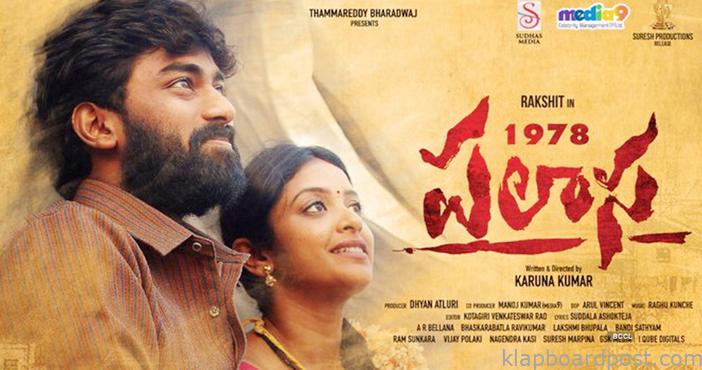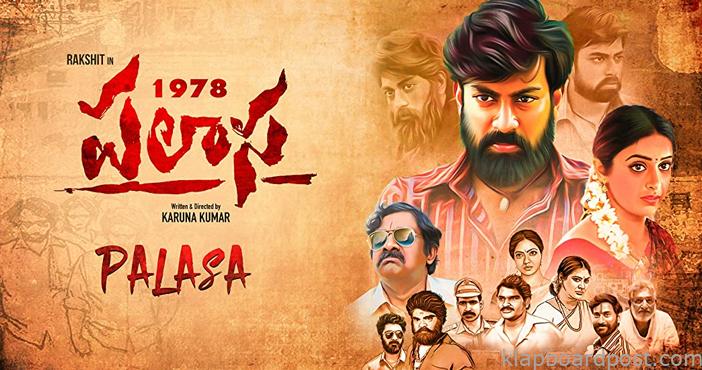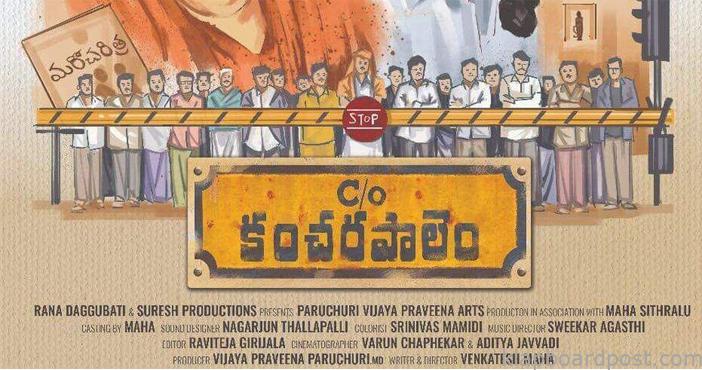Y.Sunita Chowdhary
The cinematographer of Haseen Dil Ruba and World Famous Lover, Jaya Krishna Gumamdi recently commented that he was awed by the repetition of intensity that Vijay Devarakonda showed at the dubbing of his latest film. He said, “Most of Bollywood atleast 70 % has moved into sync sound. The artistes bring a lot of thought process into their modulation, quality, texture and acoustics is reproduced after a long time coming out of the space. Not all can do that and also there is an issue to do with availability of dates. If you are shooting in small towns it makes sense to work in sync sound.” DoP, Vincent Arul whose Palasa 1978 is releasing soon says the actors get another chance to improvise when they dub. They might lose voice when they shoot, they get chance to recreate and it is obviously an option. He however says it isn’t easy to do a film in complete sync sound. In Bollywood too, they go for sync sound and also do dubbing.
 He adds Palasa was dubbed, “Where you shoot also is important, you won’t get sound properly unless you are equipped well. Thirty percent definitely is dubbed. In Bollywood, they mostly use sets. Take a house, lower or upper, their stories revolve there, grandeur is visible always. In a set, you have a choice to keep it quite and record sound. On the flip side, we don’t know till the last moment where we shoot, the location availability is subject to permissions etc. We end up in different zones when there is no light. In cinema, we cut into shots, break into shots and go to multiple angles. At the end of the day there is re recording.”
He adds Palasa was dubbed, “Where you shoot also is important, you won’t get sound properly unless you are equipped well. Thirty percent definitely is dubbed. In Bollywood, they mostly use sets. Take a house, lower or upper, their stories revolve there, grandeur is visible always. In a set, you have a choice to keep it quite and record sound. On the flip side, we don’t know till the last moment where we shoot, the location availability is subject to permissions etc. We end up in different zones when there is no light. In cinema, we cut into shots, break into shots and go to multiple angles. At the end of the day there is re recording.”
 Venkat C Dileep views Bollywood as having affordability to move to sync sound, Affording means crew grows. Venkat had done MFA in the US and he even worked as a sound designer. He says if there is an interior, based on where and which corner the scene is happening, acoustics change. Hollywood shoot is 99 percent in sync sound. Venkat observes, “They use sound blankets, they cut the sound and other noise. Some times in live locations, for example removing the sound of generators is possible by putting a sound blanket. There is a separate crew for this sound blanket. In the South here, we use dubbing for performance improvisation and since we have promptings on the set, sync sound doesn’t work. In Hollywood, they do sound recce, if they are nearest on to any airport, military base, factory. Based on that they get their sound devices. Dubbing is known as Automated Dialog replacement. In unforeseen circumstances, if Tom Cruise has to come to the studios, it is for a DR session. He gets extra payment for that. At the location, once they are done, they are done. If there is an overlap, sound engineer requests for a separate recording and sync. Sound design is a highly paid job and they get 800 to 1200$ per day. I have done 30 to 40 short films and never we went dubbing sessions there. They don’t honk in traffic. The possibility in South India is less.” The studio set is a controlled environment but sync sound in live location is difficult. Sync sound saves time and dubbing takes 2 or 3 weeks. Also we have multiple artistes from different States working in movies, their tongues don’t roll, they have no command over the language.
Venkat C Dileep views Bollywood as having affordability to move to sync sound, Affording means crew grows. Venkat had done MFA in the US and he even worked as a sound designer. He says if there is an interior, based on where and which corner the scene is happening, acoustics change. Hollywood shoot is 99 percent in sync sound. Venkat observes, “They use sound blankets, they cut the sound and other noise. Some times in live locations, for example removing the sound of generators is possible by putting a sound blanket. There is a separate crew for this sound blanket. In the South here, we use dubbing for performance improvisation and since we have promptings on the set, sync sound doesn’t work. In Hollywood, they do sound recce, if they are nearest on to any airport, military base, factory. Based on that they get their sound devices. Dubbing is known as Automated Dialog replacement. In unforeseen circumstances, if Tom Cruise has to come to the studios, it is for a DR session. He gets extra payment for that. At the location, once they are done, they are done. If there is an overlap, sound engineer requests for a separate recording and sync. Sound design is a highly paid job and they get 800 to 1200$ per day. I have done 30 to 40 short films and never we went dubbing sessions there. They don’t honk in traffic. The possibility in South India is less.” The studio set is a controlled environment but sync sound in live location is difficult. Sync sound saves time and dubbing takes 2 or 3 weeks. Also we have multiple artistes from different States working in movies, their tongues don’t roll, they have no command over the language.
 Venkatesh Maha of c/o Kancharapalem and now directing Uma Maheswara Ugrarupasya (remake of Maheshinte Prateekaram) states that sound blankets are not suitable for Indian conditions. Actors should show interest in work shops and rehearsels and push the bar and only then sync sound is possible. Dubbing is for corrections. He shot both the films in sync sound and recollects, “My second film is in a remote area in Araku, atleast 200 people would come and gape the moment I set up the camera. Despite the noise, I took risk because I want that life in the film. When actors rehearse, they become spontaneous in live location and their performance enhances. It is different from direct performance on the set. I worked on Satya Dev’s psyche and told him not to scream at any one for two months and to control his emotions. I didn’t give him the script, we went little experimental. I told him come straight to the set like Mahesh and act like him. I gave 15 days work shop to artistes and sync sound is a definite time saver.”
Venkatesh Maha of c/o Kancharapalem and now directing Uma Maheswara Ugrarupasya (remake of Maheshinte Prateekaram) states that sound blankets are not suitable for Indian conditions. Actors should show interest in work shops and rehearsels and push the bar and only then sync sound is possible. Dubbing is for corrections. He shot both the films in sync sound and recollects, “My second film is in a remote area in Araku, atleast 200 people would come and gape the moment I set up the camera. Despite the noise, I took risk because I want that life in the film. When actors rehearse, they become spontaneous in live location and their performance enhances. It is different from direct performance on the set. I worked on Satya Dev’s psyche and told him not to scream at any one for two months and to control his emotions. I didn’t give him the script, we went little experimental. I told him come straight to the set like Mahesh and act like him. I gave 15 days work shop to artistes and sync sound is a definite time saver.”
The director went to Sabdalaya dubbing studio recently and noticed that all the big commercial films took four months to dub. Even a man who requires to say one word like Hello has to dub. He says sync sound is expensive but the quality is different; On the set, there are small sounds, expressions that come from the breath. At the end of the day those who have conviction and motivation can go for sync sound he remarks and adds that one shouldn’t get judgemental. Film makers have their own requirements. Finally, South filmmakers should at least begin making the change. They can use sync sound for films which are purely conversational and is set in a controlled ambience. We have good software and our edit too has improved. The audience will definitely notice and appreciate the experience the filmmakers are giving them…













